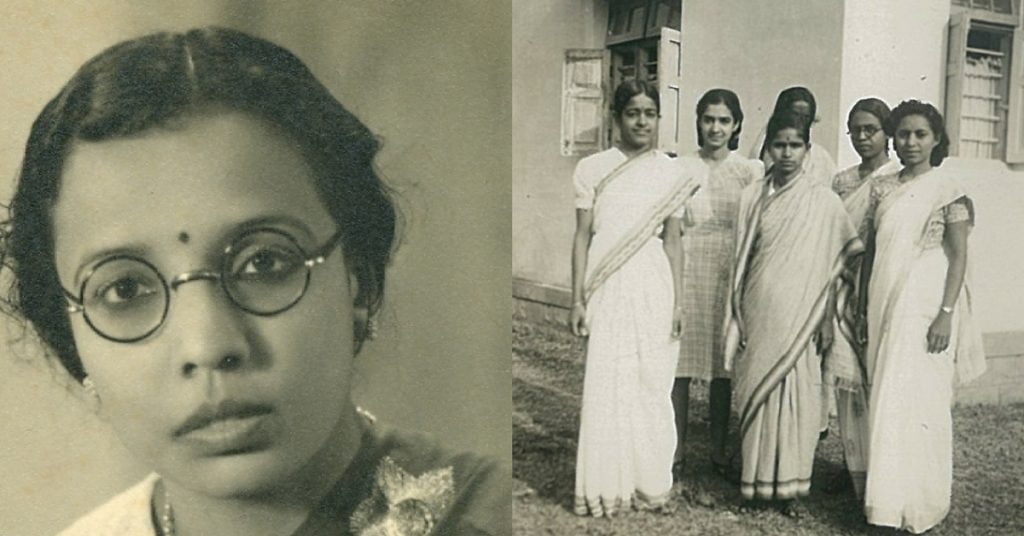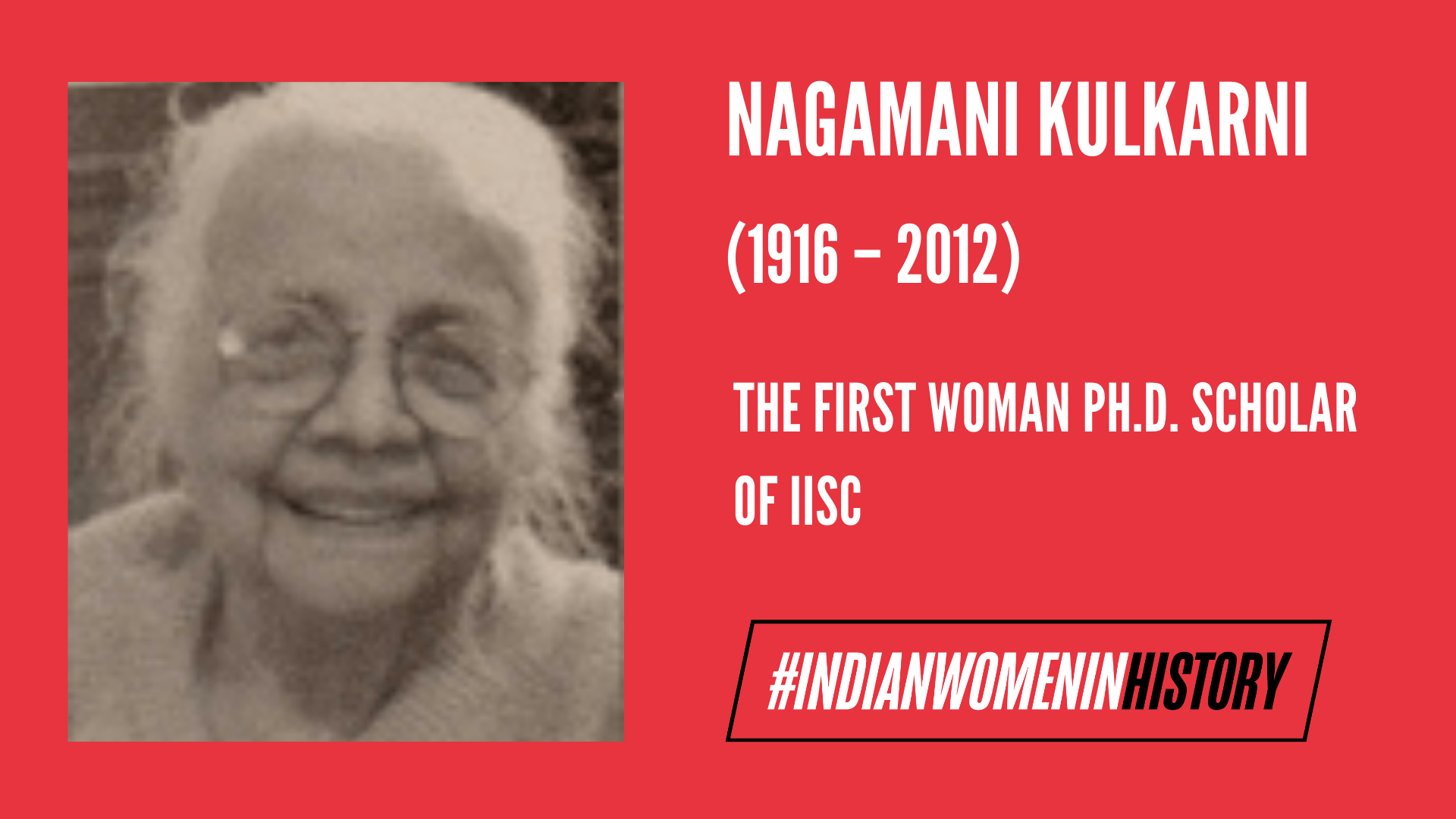Editor’s Note: This month, that is February 2020, FII’s #MoodOfTheMonth is Feminism and STEM. We seek to challenge the exclusionary biases in the field, by inviting various articles on the works of women, queer individuals, and people from marginalised communities in STEM, the ways in which the sciences are biased, stereotypes and misconceptions in STEM, and the experiences of people from marginalised identities in the field. If you’d like to share your story, email us at maduli@feminisminindia.com.
Nagamani Kulkarni, a scientist was among the first women to receive a Ph.D. in Physical Chemistry from the Indian Institute of Science (IISc), Bangalore. She was a professor at Osmania University and probably the first woman to head the Department of Chemistry there. Her achievements extended beyond the realms of science. She excelled at bridge, tennis, quilting, art and painting, embroidery and cooking.
Women and History
It would be ignorant to assume that women, like Nagamani Kulkarni, have been left out unintentionally from history. Whereas the truth is that history has always been systematically discriminatory towards women. It has often failed to document the contribution and achievements of women especially the ones who dared to challenge the norms of the patriarchal society and excel in their lives.
Women in Science, Technology, Engineering and, Mathematics (STEM) have always been considered an anomaly owing to the stereotypes that women are naturally bad at Mathematics and Science. And hence, when women who not just challenge this stereotype but create history, ironically, are left out of history.
On the contrary, it is a careful and systematic attempt to marginalize women and celebrate the achievements of men often from the same field. Women in Science, Technology, Engineering and, Mathematics (STEM) have always been considered an anomaly owing to the stereotypes that women are naturally bad at Mathematics and Science. And hence, when women who not just challenge this stereotype but create history, ironically, are left out of history.
Early Life and Education

Nagamani Kulkarni, was born on January 11, 1916, to Thangamma and Dr. Shama Rao. Her father, a doctor in the British Army died in the First World War due to side effects of Mustard Gas in Iraq then Mesopotamia). She was only 8 when her father left the world but undeterred by the loss and supported by her mother, she continued her education.
Also read: Sulochanabai Dongre: The Woman Who Advocated Birth-Control In Dalit Feminism | #IndianWomenInHistory
Nagamani excelled at Math and painting during her schooling from Vani Vilas High School. She continued her education from Central College, Bangalore and then joined IISc for her MSc and Ph.D. in Physical Chemistry. She continued excelling at Tennis and Bridge and also became the first woman and one of the firsts women in the country to receive a Ph.D. in Physical Chemistry in 1943. This was a major achievement not just for her but for the whole country as well. But unfortunately, very little literature is available on the life and career of Nagamani.
She continued excelling at Tennis and Bridge and also became the first woman and one of the firsts women in the country to receive a Ph.D. in Physical Chemistry in 1943. This was a major achievement not just for her but for the whole country as well. But unfortunately, very little literature is available on the life and career of Nagamani.
Challenges In Her Life
Like any other high achieving woman, Nagamani Kulkarni faced problems during her career and personal life. Her accomplishments were seen as impediments that might prevent her from a suitable match and was suggested to hide them. On the face of it, it might not appear to be problematic but the thought behind such an idea reflects the deep patriarchal mindset of society that women are and should be below men. Nagamani being a strong-headed woman did not bow down to the pressure and expectations of society. She refused to undermine her achievements. She eventually met and fell in love with Bapu S. Kulkarni, a fellow Ph.D. scholar from IISc. They got married and after completing their PhDs moved to Hyderabad in 1944.
However, the ghost of patriarchy doesn’t leave a woman ever. Even after receiving her doctorate she couldn’t work for 4 years. This was because the Nizam of Hyderabad had banned women from working and only after the Nizam was dethroned in 1948 and the state was annexed, she finally got to work. She first joined Osmania University as a reader and eventually became the first woman to become the chairperson of the Chemistry Department.
Even after receiving her doctorate she couldn’t work for 4 years. This was because the Nizam of Hyderabad had banned women from working and only after Nizam was dethroned in 1948 and the state was annexed, she finally got to work. She first joined Osmania University as a reader and eventually became the first woman to become the chairperson of the Chemistry Department.
Later life and Death
Nagamani, after the death of her husband, went to live with her son in Brigham City, U.S. in 1992. She continued to ace at her hobbies of Bridge and embroidery. Also, she displayed her hand-embroidered sarees and Bunka pictures at the Senior Center and Perry City Office. She passed away in 2012 at the age of 96.
Also read: C B Muthamma: India’s First Woman IFS Officer | #IndianWomenInHistory
From whatever little is known about her life, it can surely be concluded that Nagamani Kulkarni was an inspiring woman who despite the difficulties, achieved great heights and became the women of many firsts. Her parting words “Sarve Janah Sukhino Bhavantu“, a Sanskrit Shlok that means “May all the people in the world live happily” reflect her life’s ideology. It is unfortunate that the lives of women who dare to dream get lost in the politics of power.
References
Featured Image Source: The Better India
About the author(s)
Art| Photography| Poetry
Political and social being




